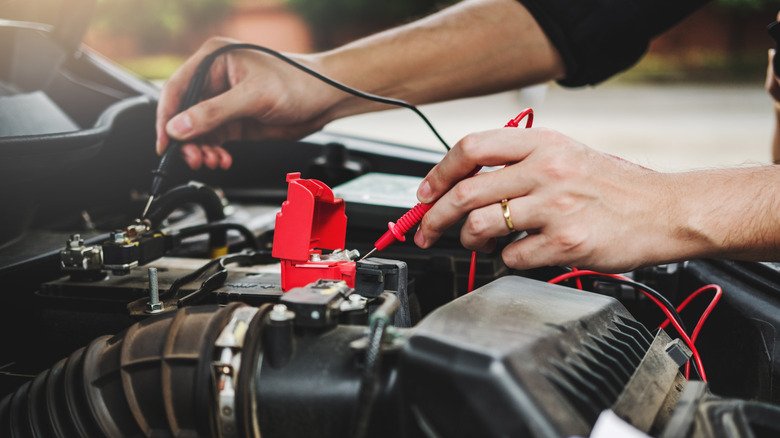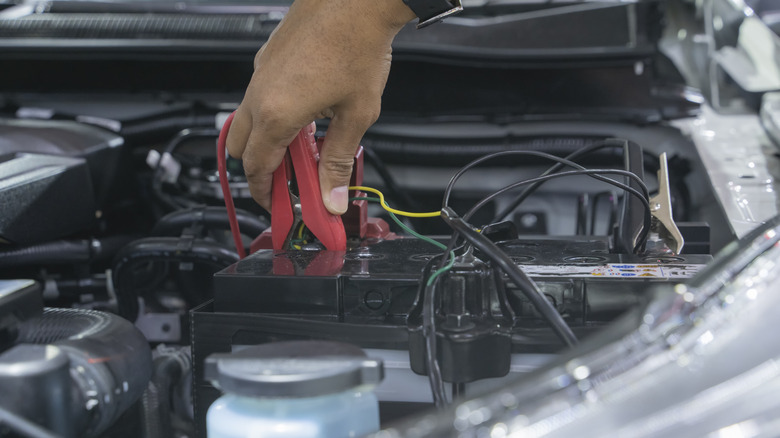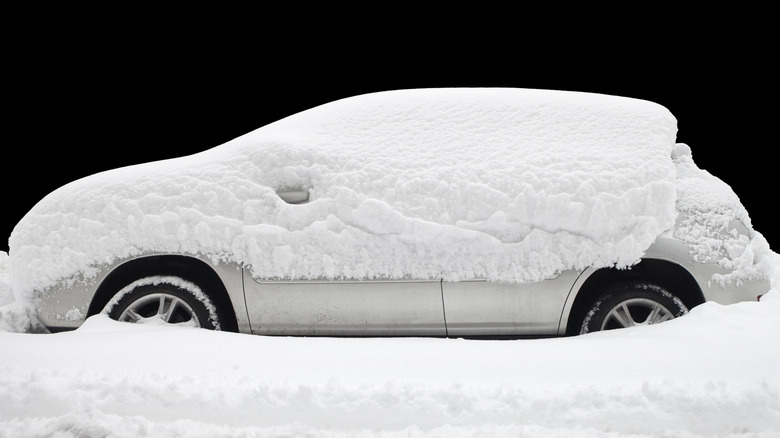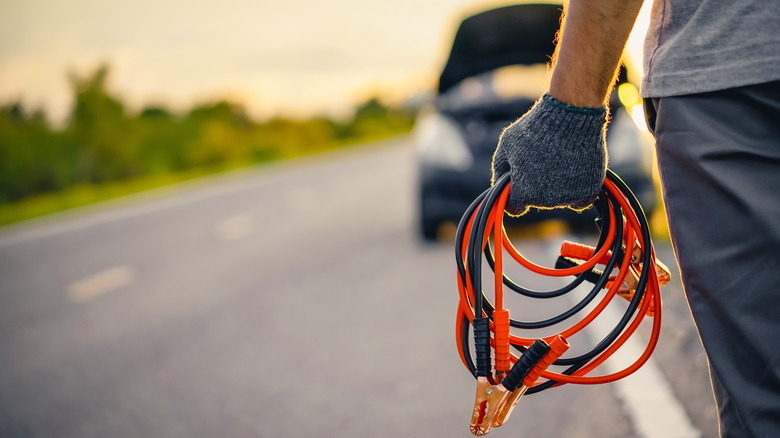Can You Charge Your Car Battery By Leaving Your Engine Running?
There are few greater frustrations in life than hearing the persistent clicking of your engine trying to turn over in vain. If you have a faulty alternator or just plain bad luck, finding out your car's battery needs a charge can ruin your day. However, there are a number of ways to not only recharge your car's battery, but to make sure it stays charged.
The most obvious way to charge a battery is with jumper cables, although not every driver keeps a set in their vehicle. There are also portable battery chargers that hold enough juice to give your car's battery a jolt. A less obvious way to keep your battery charged is by keeping the vehicle in park and letting your engine idle, though it may not work exactly as you think.
Between the amount of time it takes to charge a battery, the lack of power an idle engine makes, and the fact that an alternator is not meant to charge a battery, it is difficult but possible to charge your car's battery by leaving your engine running.
Yes ... but, also no
Charging a car battery can take you longer than expected, even more so when the energy it's receiving comes from an idling engine. If you jump your car and leave the vehicle in park, this would typically keep the engine resting under 1,000 RPMs. At that rate of spin, the engine isn't providing enough mechanical electricity to help the alternator charge the battery at any acceptable rate of speed.
When the vehicle is idling, the alternator is also in charge of running all the vehicle's extra goodies, such as the infotainment and climate systems. Because of that, there's only enough power to charge the battery a few amps, not the hundreds of amps the engine requires in order to be started.
While an idle engine may not require the necessary power to charge a battery, an engine in use does. While possible, "You would need to drive for a long time to charge a car battery. Your alternator is not a charger, there is no way your battery will get to 100% while you're driving," said Jeff Barron, auto electronics expert at Interstate Batteries. According to Interstate Batteries, you would have to drive for over 500 miles at 65 mph in order to charge your car battery from 50% up to 80%.
How to keep your vehicle charged
One way to avoid worrying about your car battery dying is by performing preventative maintenance, such as periodically checking your battery's charge. For those who live in cold-weather environments or perilous winter seasons, keeping your vehicle attached to a trickle-charger is almost a necessity. If you're someone who only uses their car on rare occasions, a trickle-charger is a great way to make sure your battery doesn't die.
A portable battery charger is a great option for those who don't have access to a trickle charger. Keeping one in your trunk will help make sure you can solve your battery issues with ease. Just attach the portable battery charger's jumper cables to your car's battery, follow the directions, and you'll be back on the road in no time.
Speaking of jumper cables, having a set in your vehicle is another easy way to save yourself from a dire battery situation. As long as another vehicle stops to help, jumper cables are almost guaranteed to work.
What to do if your car runs out of battery
Every night, you attach your trickle charger and you keep jumper cables in your car, but perhaps the worst has happened — you find your vehicle with a dead battery. The first step is to call a friend who can drive to your location to help jump your car, or if you can find a driver nearby who'd be willing to help jump your car. You can also choose to call a towing service or a mechanic, who will either jumpstart your car or — if there are larger issues — tow your vehicle to be fixed.
Remember that car batteries tend to last between three and five years. If you think your car's battery is getting long in the tooth or you have to turn the keys two or three times to start, it may be time for a new battery. Other signs of low battery life include dim headlights and the smell of burnt wiring.



